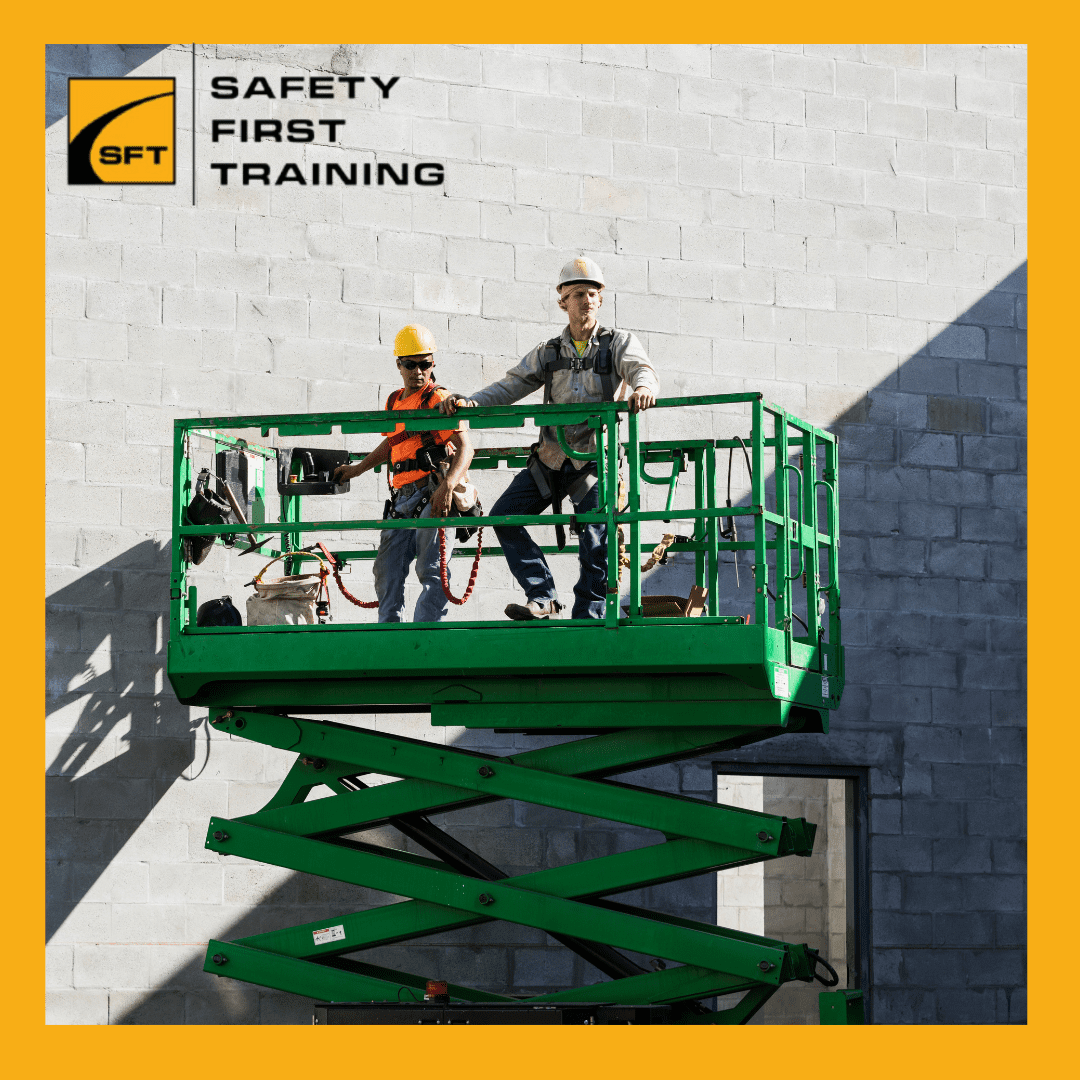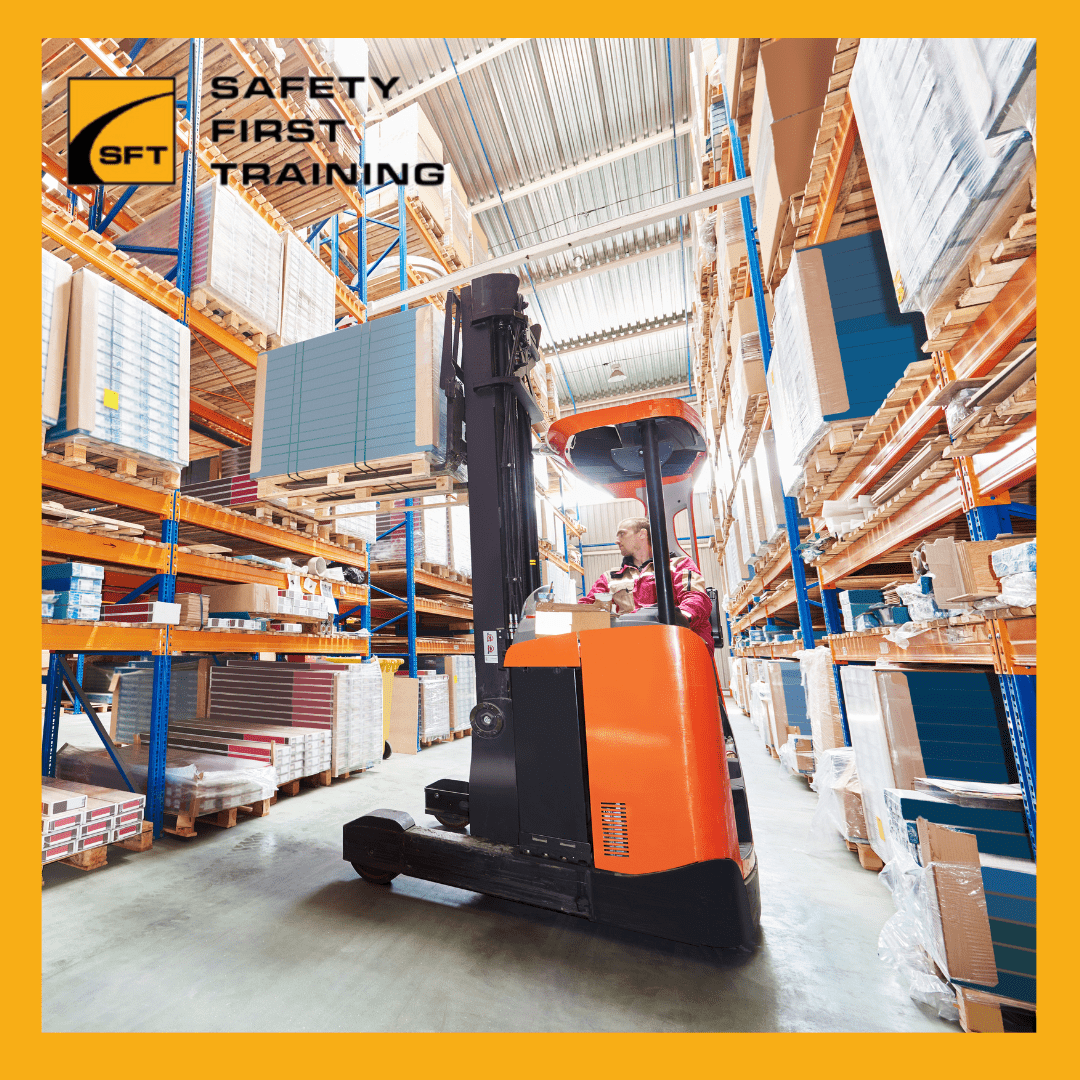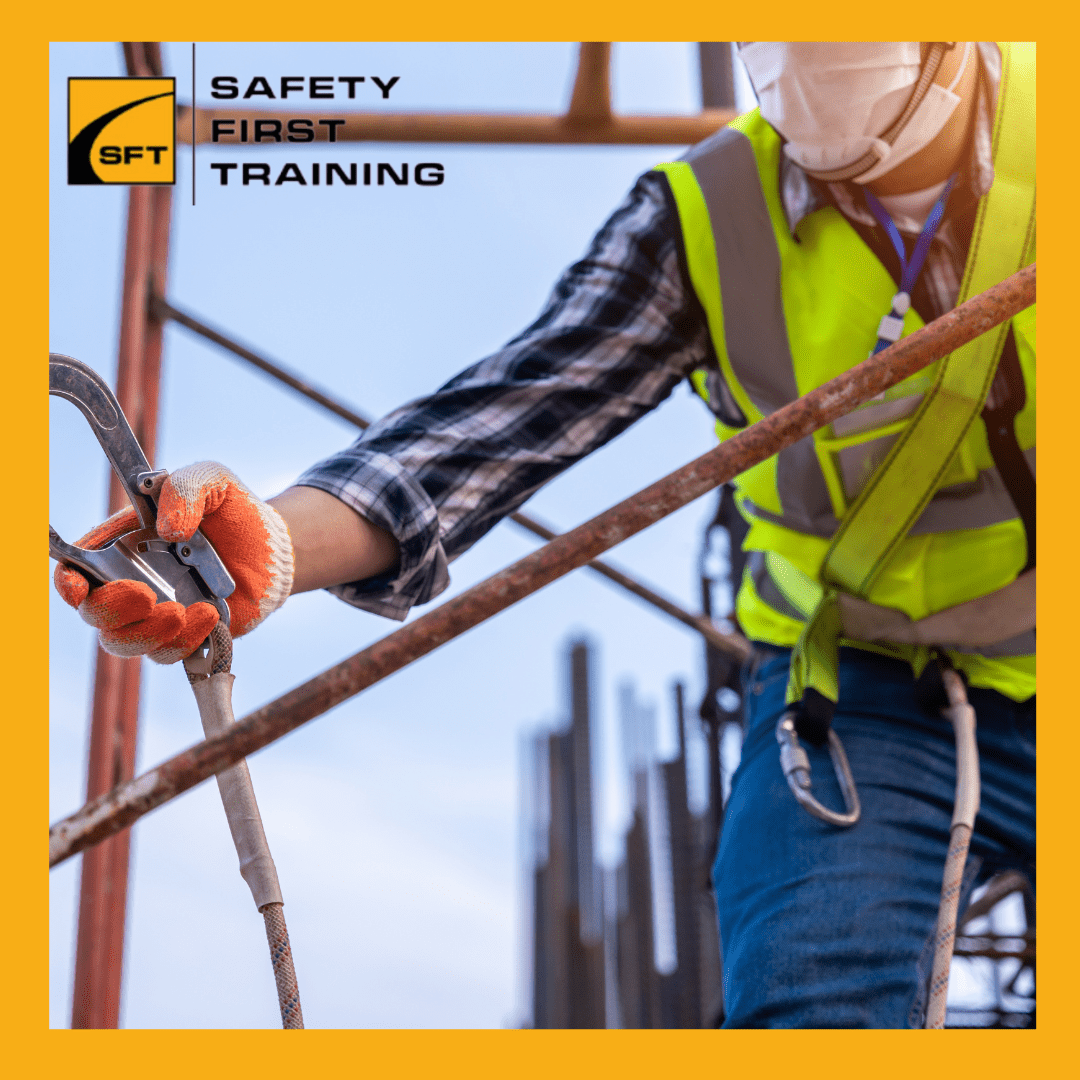SCISSOR LIFT AERIAL LIFT TRAINING CERTIFICATION - SAFE OPERATION
Scissor Lifts, commonly referred to as Genie, JLG, Skyjack, Haulotte, Snorkel or MEC, are commonly used workplace equipments. The Scissor Lift / Aerial Lift Training & Certification course from Safety First Training is an OHSA based program that teaches about the different types of scissor lifts, pre-operation inspection, safe operation requirements including setup, operating and moving the machine and hazard avoidance. Training is offered throughout Ontario including Toronto, Mississauga, Brampton, Markham, Vaughan, Richmond Hill, Oakville, Burlington, Hamilton, Pickering, Ajax, Whitby, Oshawa, Milton, Georgetown, Aurora, Newmarket, Caledon, Barrie, Guelph, Kitchener, Waterloo, Cambridge, St. Catharines, Niagara Falls, Peterborough, Orangeville, Grimsby, Brantford, Stratford, Simcoe, Woodstock, Collingwood, Orillia, Port Hope, Kawartha Lakes, and more.
We also offer Train the Trainer courses for Scissor Lifts.
Scissor Lift / Aerial Lift Pricing - Special Discounts and Preferred Pricing Offered, Contact Us Directly
Scissor Lift with Fall Arrest – Experienced Operator 2 – 4 hours
1-3 Participants: $829.00/Session
4-5 Participants: $1,199.00/Session
6-10 Participants: $1,539.00/Session
Scissor Lift with Fall Arrest – New Operator 4 – 6 hours
1-3 Participants: $1,029.00/Session
4-5 Participants: $1,309.00/Session
6-10 Participants: $1,709.00/Session
Want to take the Online course instead?
Duration
Up to 6 hours, depending on participants' experience levels
Assessment
A passing grade of 75% is required in order to receive a certificate
Completion
Upon successful completion of this course, participants will receive a PDF wall certificate and PDF wallet card for their records
Scissor Lift/Aerial Lift Training & Certification
This course is designed using parameters set out by:
CSA Standard B335-15 - The CSA Safety Standard for Lift Trucks (B335-15) identifies the knowledge, practical skills and evaluation requirements needed by lift truck operators. The practical evaluation requires lift truck operators to demonstrate competency skill level equal or greater to the industry accepted measurements.
The Occupational Health and Safety Act, REGULATION 851. INDUSTRIAL ESTABLISHMENTS as it pertains to lift truck safety.
Course Outline:
Scissor Lift/Aerial Lift/Elevated Work Platform (EWP) Training & Certification Course Introduction
Related Government legislation
Scissor Lift Safety Video
Responsibilities of the workers, supervisors and employers
Identify various types of lift trucks
Pre-operational checks
Inspection, maintenance, and records
Lift capacity and load limitations
Fuel safety for both electric and propane equipment
Safe operating procedures
Scissor lifts and aerial lifts are essential pieces of equipment for many industries in Ontario, such as construction, maintenance, and warehousing. While these machines can be very useful, they can also be dangerous if not used properly. That's why it's crucial to receive proper scissor lift and aerial lift training in Ontario.
Here are some reasons why scissor lift and aerial lift training is important in Ontario:
Safety: Scissor lifts and aerial lifts can be hazardous if not used correctly. Accidents can result in serious injuries or even fatalities. Proper training teaches operators how to use the machines safely, which reduces the risk of accidents.
Compliance: Ontario has specific safety regulations that employers must follow when using scissor lifts and aerial lifts. Training helps operators understand these regulations and comply with them.
Productivity: When operators are properly trained, they can use scissor lifts and aerial lifts more efficiently, which can increase productivity. This, in turn, can improve the bottom line for businesses that use these machines.
Liability: If an accident occurs and an operator has not been properly trained, the company could be held liable. By providing training, employers can demonstrate that they have taken the necessary steps to ensure the safety of their workers.
Confidence: Proper training helps operators feel more confident in their ability to use scissor lifts and aerial lifts safely. This confidence can improve job performance and reduce the risk of accidents caused by operator error.
Scissor lift and aerial lift training is essential in Ontario for both employers and employees. It helps ensure worksite safety, compliance, productivity, liability protection, and operator confidence.
Train the Trainer – Scissor Lift: Elevated Work Platform (EWP)
Our course on certifying trainers for Scissor Lift (EWP) operations is designed to enable clients to personally deliver OHSA-compliant training to their workforce. Instead of outsourcing safety training, these programs offer a more economical option for individuals or groups of employees in need of instruction. Participants will gain the skills to effectively train their company's staff in Scissor Lift safety.
Included in our Train the Trainer Course Package are:
A comprehensive teaching manual
Handouts for participants
Assessment forms
A customizable certificate templates
Presentation materials for instructors
A test with answers provided
Supplementary videos for the course
Templates for wallet-sized certification cards
Aerial Lift Training Essentials:
Scissor Lift:
Also referred to as an aerial work platform, SkyJack, elevating work platform, or mobile elevating work platform.
Primarily used for general maintenance tasks.
Typically, operable by a single individual.
Offers flexibility in maneuvering and positioning.
Aerial Lift (Genie Boom):
Also known as a telescopic boom.
Ideal for accessing confined areas in construction and industrial settings.
Features adjustable drive speed for enhanced control.
Bucket Truck:
Utilized for raising and lowering workers to elevated locations, replacing the need for ladders.
Available in variations with single or double-arm booms.
Constructed from materials such as wood, fiberglass, metal, or reinforced plastic.
Safety Guidelines – Always!
It's crucial to:
Adhere to provincial Occupational Health and Safety Regulations.
Follow the employer's Health and Safety procedures diligently.
Refer to Operator's and Manufacturer's Manuals for proper operation.
Wear appropriate Personal Protective Equipment (PPE) at all times.
Respect equipment lifting capacity and heed warning signs.
Perform pre-shift, pre-start-up, and visual inspections routinely.
Report any equipment absence or defects promptly.
Test all equipment functions to ensure they're in working order.
Avoid risky situations like steep slopes, grades, and drop-offs.
Use equipment only for its intended purpose.
Ensure proper training and authorization before operating equipment.
For more safety tips, watch a Scissor Lift safety video from JLG by clicking here.




